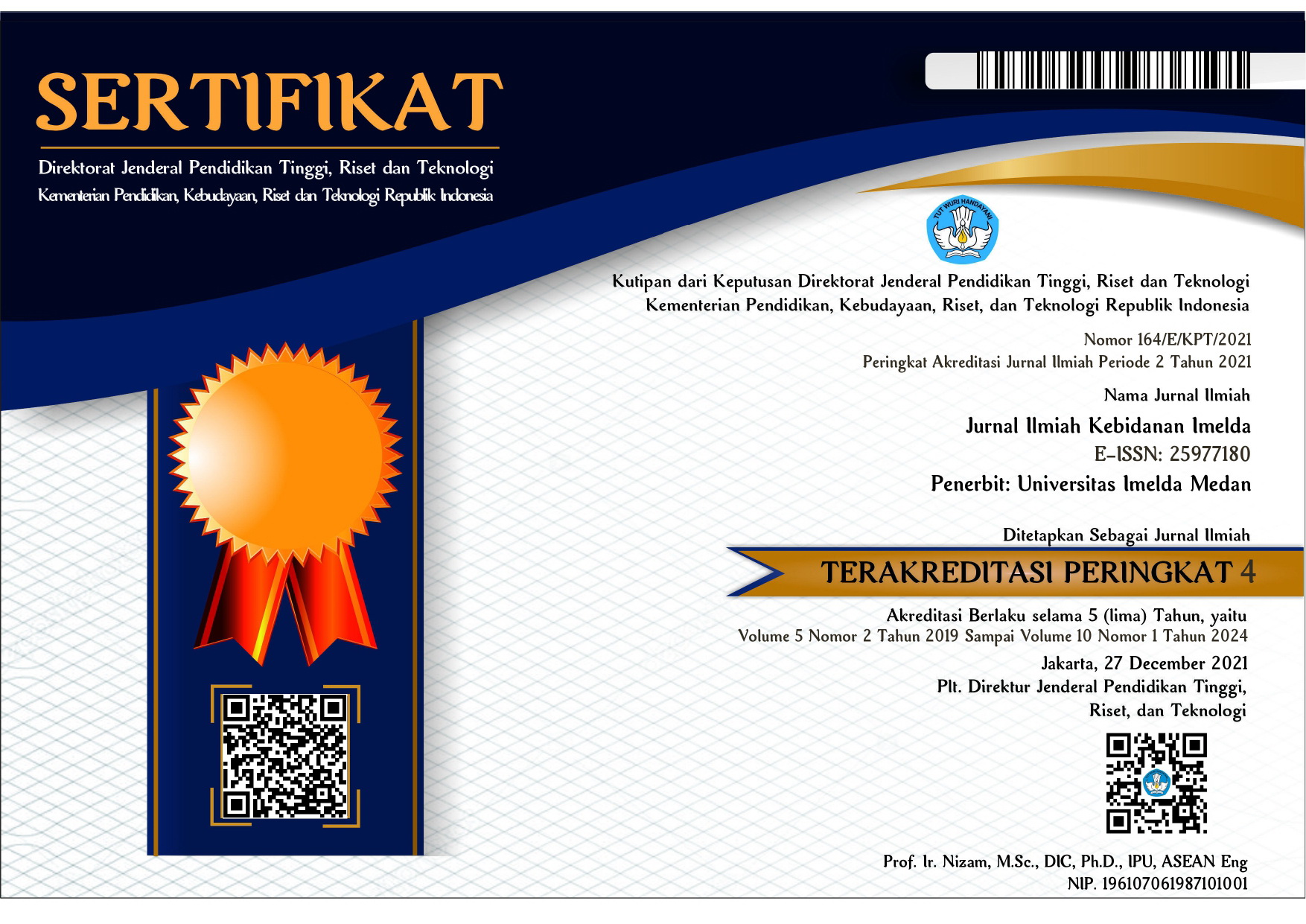EFEKTIVITAS KONSUMSI PROTEIN HEWANI (TELUR DAN IKAN) SEBAGAI STRATEGI PENUNTASAN STUNTING
DOI:
https://doi.org/10.52943/jikebi.v9i2.1352Keywords:
Toddler, Stunting, Animal ProteinsAbstract
Nutritional problems in Indonesia result in more than 80 (%) child deaths. Based on the 2022 Indonesian Nutrition Status Study (SSGI) survey, the national prevalence of stunting was 21.6%, Central Java province was 20.8% and in the Central Java region the highest stunting toddler was Brebes Regency, which was 29.1%. Stunting is a condition where a toddler has a length or height that is less than his age. Providing additional food especially for vulnerable groups is one of the supplementation strategies in overcoming nutritional problems. Providing additional food to infants is an effort to meet the nutritional needs of infants so that infants can achieve optimal growth and development.This research is a quantitative study with a cross-sectional design, which aims to determine the effectiveness of consuming animal protein (eggs and fish) for toddlers who are stunted. The study was conducted in May and June by providing food in the form of boiled chicken egg protein and fish for 30 days to 33 respondents. Univariate analysis using frequency distribution and bivariate analysis using Chi-Square. The results showed that there was an increase in nutritional status and a decrease in stunting between before and after receiving the intervention. Statistical tests obtained a p-value of 0.039 which indicated that there was an effect of animal protein (eggs and fish) on stunting.
References
C. Erty Suksesty, “Efektifitas Program Pemberian Makanan Tambahan Menggunakan Kombinasi Jus Kacang Hijau Dan Telur Ayam Rebus Terhadap Perubahan Status Gizi Stunting Di Kabupaten Pandeglang,” J. IMJ Indones. Midwifery J., vol. 3, no. 2, pp. 35–41, 2020.
Kemenkes, “Hasil Survei Status Gizi Indonesia (SSGI) 2022,” pp. 1–7, 2023.
Kemenkes RI, “Rencana Aksi Kegiatan Direktorat Gizi Masyarakat Tahun 2020-2025,” Book, pp. 1–19, 2020.
H. Helda, “Kebijakan Peningkatan Pemberian ASI Eksklusif,” Kesmas Natl. Public Heal. J., vol. 3, no. 5, p. 195, 2009, doi: 10.21109/kesmas.v3i5.209.
Siswanto, Buku Studi Diet Total: Survei Konsumsi Makanan Individu Indonesia 2014. 2014.
N. Izah, E. Zulfiana, and N. Rahmanindar, “Analisis Sebaran dan Determinan Stunting berdasarkan Karakteristik Keluarga pada Balita Usia 6 – 59 Bulan Effect of Family Characteristics on Stunting Events in Toddlers Aged 6-59 Months,” vol. 6, no. 1, pp. 47–51, 2020, doi: 10.21070/midwiferia.v.
S. Niluh Nita Silviana, Anna Veronika Pont, “Viva Medika,” J. Kesehat., vol. 12, no. 00007, pp. 1–19, 2019.
E. Kusumawati et al., “Model Pengendalian Faktor Risiko Stunting pada Anak Usia di Bawah Tiga Tahun Model of Stunting Risk Factor Control among Children under Three Years,” J. Kesehat. Masy. Nas., pp. 249–256, 2013.
N. Izah, E. Zulfiana, and N. Rahmanindar, “Analisis Sebaran dan Determinan Stunting pada Balita berdasarkan Pola Asuh (Status Imunisasi dan Pemberian ASI Ekslusif),” J. Ilmu Keperawatan dan Kebidanan, vol. 11, no. 1, pp. 27–31, 2020, [Online]. Available: https://ejr.stikesmuhkudus.ac.id/index.php/jikk/article/view/764.
R. D. M. Solihin, F. Anwar, and D. Sukandar, “Motorik Pada Anak Usia Prasekolah (Relationship Between Nutritional Status, Cognitive Development, and Motor Development in Preschool Children),” Penelit. Gizi dan Makanan, vol. 36, no. 1, pp. 62–72, 2013.
H. P. Sari, I. Natalia, A. R. Sulistyaning, and F. Farida, “Hubungan Keragaman Asupan Protein Hewani, Pola Asuh Makan, Dan Higiene Sanitasi Rumah Dengan Kejadian Stunting,” J. Nutr. Coll., vol. 11, no. 1, pp. 18–25, 2022, doi: 10.14710/jnc.v11i1.31960.










